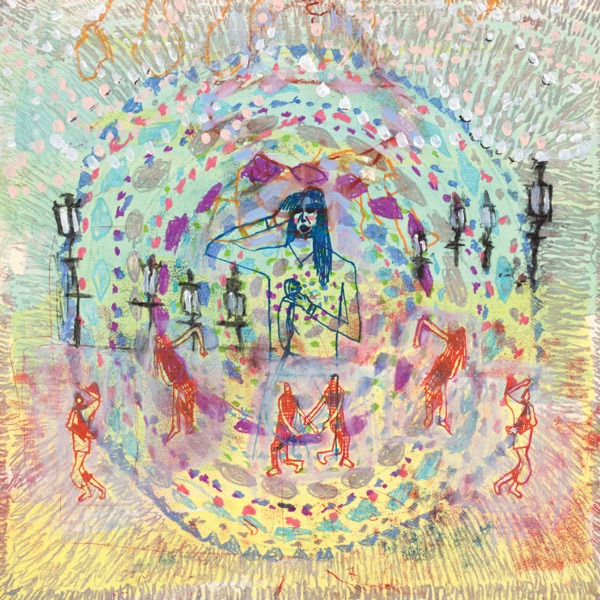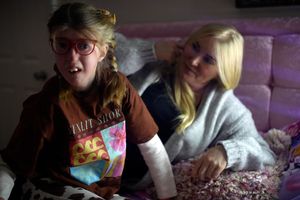Hurricane Melissa, one of the strongest Atlantic hurricanes ever, caused devastation in the Caribbean, killing at least 34 people.
The storm made landfall in Jamaica on Tuesday with wind speeds of 185mph, making it the worst storm to hit the Caribbean country since records began some 174 years ago.
It weakened by the time it reached Cuba on Wednesday morning but still brought devastation - with houses collapsed and roads blocked.
The Red Cross said early indications show Hurricane Melissa has been a "disaster of unprecedented catastrophe".
Here's what we know so far.
Who has died after the storm?
At least 25 people died in the southern Haitian coastal town of Petit-Goâve after the La Digue river burst its banks as a result of the hurricane, according to the town's mayor Jean Bertrand Subreme.
Steven Guadard, who lives in Petit-Goâve, said Melissa killed all of his young children.
"I had four children at home: a one-month-old baby, a seven-year-old, an eight-year-old and another who was about to turn four," he said.
Lawyer Charly Saint-Vil, 30, said he saw bodies lying among the debris as he walked the streets of the small town after the storm, with people screaming as they searched for their missing children.
Officials said 10 of the victims were children, and that 18 other people were missing.
The storm is also responsible for at least eight deaths in Jamaica and one in the Dominican Republic, officials have said.
Three of the deaths in Jamaica happened during preparations for the storm's arrival as people were cutting trees, health minister Christopher Tufton said.
How badly was Jamaica hit?
Prime minister Andrew Holness said it "ravaged" the country, leaving a "heartbreaking" amount of damage in its wake.
The government formally declared Jamaica a disaster area as the storm struck, saying almost every parish had reported blocked roads, fallen trees and major flooding.
Mr Holness said up to 90% of roofs in the southwest coastal community of Black River were destroyed, with several families becoming trapped by floodwaters and crews were unable to help them because of dangerous conditions.
Desmond McKenzie, Jamaica's local government minister, said the southwestern parish of St. Elizabeth "is underwater" and suffered extensive damage.
Four main hospitals along the coast were damaged and one lost power, forcing officials to evacuate 75 patients, he added.
On Thursday, more than 25,000 people remained crowded into shelters across the western half of Jamaica, with 77% of the island without power.
"News is already coming through that whole communities are underwater and that the damage left by the strong winds has been devastating," said Alexander Pendry, British Red Cross global response manager.
"Tragically, experience tells us that the impact on communities and individuals will be shattering and long-lasting."
Before the hurricane made landfall, the Red Cross said it was preparing for just over half of Jamaica's population, about 2.8 million people, to be directly affected.
The prime minister had warned there was "no infrastructure in the region that can withstand a Category 5".
Addressing Jamaicans in a statement on X, Mr Holness vowed to rebuild "even better than before".
"I know many, especially those in the worst-affected parishes, are feeling disheartened," he said.
"Your homes may have been damaged or destroyed and your communities and towns no longer look the same.
"I know your pain and I feel your loss. We are mobilising quickly to start the relief and recovery efforts and we will be there with you every step of the way."
Jamaica's main international airport reopened late on Wednesday, allowing emergency relief flights to land.
How bad was it in Cuba?
The hurricane was downgraded from Category 5 to Category 3 by the time it reached Cuba on Wednesday, but the US National Hurricane Center said it still had the potential to be "life-threatening".
More than 735,000 were evacuated from the country's east, and no fatalities had been reported as of Thursday, when people began returning to their homes.
Officials from the affected provinces - Santiago, Granma, Holguín, Guantánamo, and Las Tunas - reported losses of roofs, power lines, fibre-optic telecommunications cables, cut roads, isolated communities and losses of banana, cassava and coffee plantations.
In the more rural areas outside the city of Santiago de Cuba, water remained in vulnerable homes on Wednesday night as residents returned from their shelters to save beds, mattresses, chairs, tables and fans they had elevated ahead of the storm.
Residents in the eastern Cuban province of Santiago de Cuba were seen clearing debris around the collapsed walls of their homes after Melissa hit, while local media showed images of the Juan Bruno Zayas Clinical Hospital with glass scattered across the floor, waiting rooms in ruins and masonry walls crumpled on the ground.
Many communities were still without electricity, internet and telephone service on Thursday due to downed transformers and power lines.
Cuba's National Institute of Hydraulic Resources reported accumulated rainfall of 15 inches (38cm) in Charco Redondo and 14 inches (36cm) in Las Villas Reservoir.
The government suggested the heavy rainfall would prove beneficial for the reservoirs and for easing a severe drought in eastern Cuba.
Read more:
What is the difference between a cyclone, typhoon and hurricane?
Has the storm passed now?
Early on Thursday, the storm had been downgraded to Category 2 with sustained winds of near 100mph, heading for the Bahamas and Bermuda.
Hurricane warnings remained in effect early Thursday for the southeastern and central Bahamas and for Bermuda.
Authorities in the Bahamas, which is four hours behind UK time, evacuated dozens of people from the archipelago's southeast corner ahead of Melissa's arrival, warning that hurricane conditions were expected to continue through the morning.
Forecasters said Melissa was expected to pass near or to the west of Bermuda late on Thursday and possibly strengthen again before weakening on Friday.
Why is the storm named Melissa?
Since 1953, Atlantic tropical storms have been named by the US National Hurricane Center and then the World Meteorological Organisation.
Six lists of names are used in rotation and recycled every six years.
Should three more storms occur after Melissa, their names will be Nestor, Olga and Pablo.
The only time there is a change to the list is if a storm is so catastrophic that to use its name for another storm would be insensitive.
For example, the name Katrina was retired by the World Meteorological Organisation due to the 2005 storm's devastating impact - it was replaced with the name Katia.
The use of easily remembered names reduces confusion when two or more tropical storms occur at the same time.

(c) Sky News 2025: Hurricane Melissa: What we know about the storm that has killed dozens in the Caribbean


 Fawlty Towers actress Prunella Scales has died
Fawlty Towers actress Prunella Scales has died
 Donald Trump says tariffs will be cut after 'amazing' meeting with Xi Jinping
Donald Trump says tariffs will be cut after 'amazing' meeting with Xi Jinping
 Microsoft, Alphabet and Meta results overshadowed by growing fears of AI bubble
Microsoft, Alphabet and Meta results overshadowed by growing fears of AI bubble
 This mum faces a nightly battle to keep her daughter alive - but the NHS won't help her
This mum faces a nightly battle to keep her daughter alive - but the NHS won't help her
 'Close eye' will be kept on OpenAI's for-profit conversion, says California's attorney general
'Close eye' will be kept on OpenAI's for-profit conversion, says California's attorney general
 Santander warns car finance redress scheme a threat to UK jobs, growth and economy
Santander warns car finance redress scheme a threat to UK jobs, growth and economy
 Wrongly-released migrant sex offender Hadush Kebatu claims he was 'ignored' by police while trying to hand himself in
Wrongly-released migrant sex offender Hadush Kebatu claims he was 'ignored' by police while trying to hand himself in
 Investigation into Reeves not needed, says Starmer - after she apologises for rental 'mistake'
Investigation into Reeves not needed, says Starmer - after she apologises for rental 'mistake'


